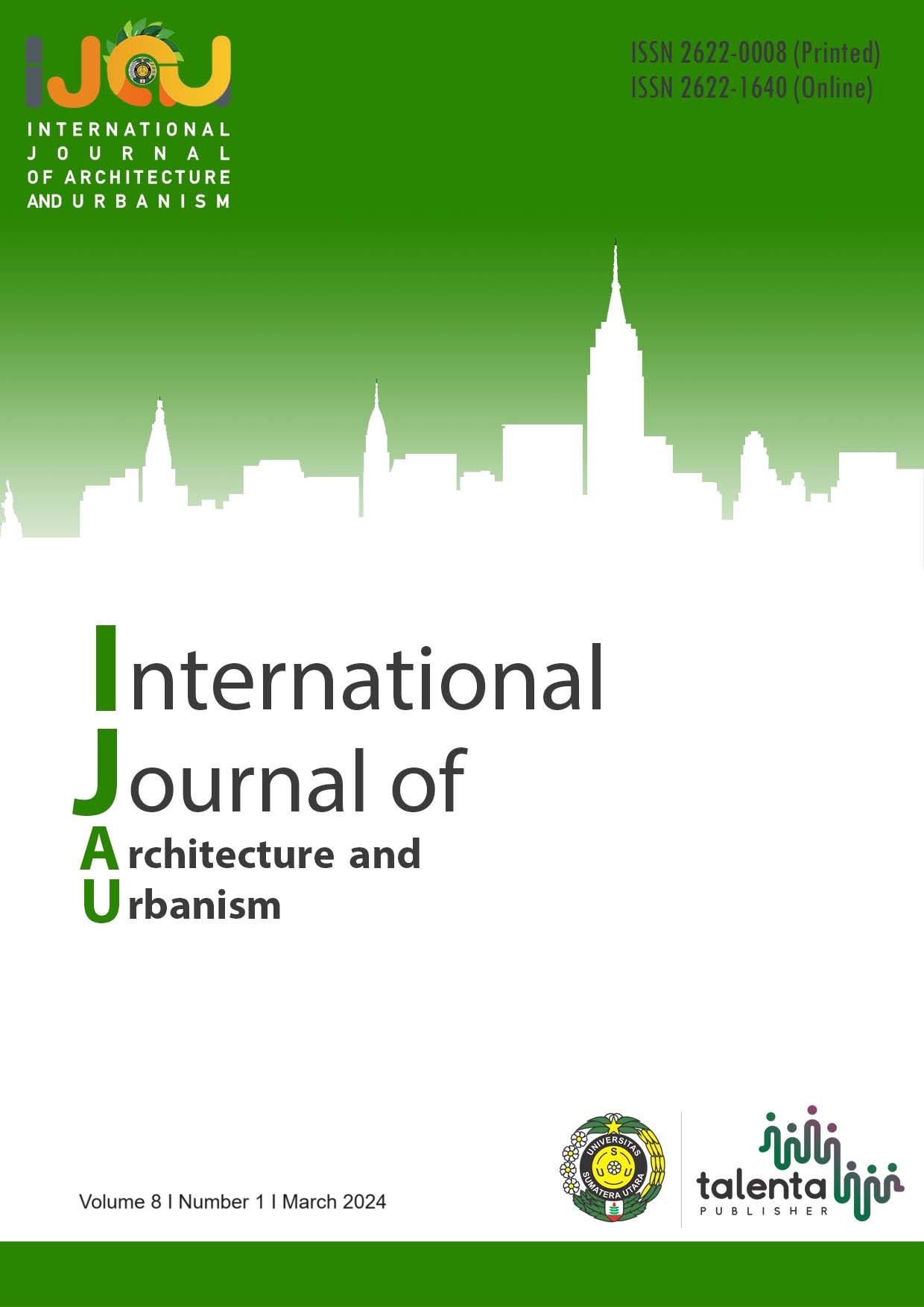Place Attachment On Kayutangan Cultural-Heritage Area As Sustainable Public Space
DOI:
https://doi.org/10.32734/ijau.v8i1.14989Keywords:
place attachment, cultural heritage, public space, sustainabilityAbstract
Reserving heritage areas has become a topic that has been discussed very frequently in recent years. What is interesting about preserving heritage areas is the active interaction that connects tangible and intangible elements. This active interaction is usually called place attachment. In the revitalization of the Kayutangan area, the government's efforts to revive the area with the concept of a heritage area are closely related to the attachment that local communities have to their place of life. Therefore, this research was conducted to find out, evaluate, and understand how places are attached to the Kayutangan area as a cultural heritage area. The research was conducted using descriptive and qualitative evaluative methods by conducting field observations and literature studies. The data obtained was evaluated using an analysis unit to see the qualifications that the Kayutangan area must fulfill as a public cultural heritage area. The results obtained from this research are the lack of cultural heritage public space elements in areas such as local architecture, the dominance of the main business in adaptive reuse buildings, authentic experiences, the lack of facilities that show gender equality and attention to the disabled community, resulting in no sense of loss. of justice, and a sense of mission in showing the attachment of local residents to their living area. The results of the research contribute to knowing how the results of Kayutangan revitalization are progressing and serve as input for evaluation in the future development of the area
Downloads
Downloads
Published
How to Cite
Issue
Section
License
Copyright (c) 2024 International Journal of Architecture and Urbanism

This work is licensed under a Creative Commons Attribution-ShareAlike 4.0 International License.


.png)










